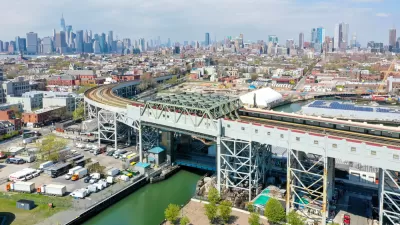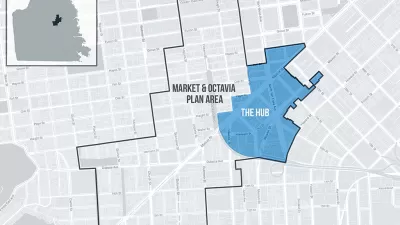A recent study by the Council of Community Housing Organizations and the Mission Economic Development Agency puts some hard numbers to the displacement forces weeping through a historically Latino neighborhood in San Francisco.
"According to [a recent] study, conducted by the Council of Community Housing Organizations and the Mission Economic Development Agency, Latinos comprised half of the Mission’s population in 2000 and now are less than 40 percent of the population," reports Joe Fitzgerald Rodriquez. That decreased shared represents a net loss of 8,000 Latinos from the Mission during that time. The study also projects forward, noting that Latinos will make up less than a third of the population in the neighborhood by 2020 if the trend persists.
Rodriguez also notes that other demographic groups are also declining in population in the Mission. "Families of any ethnicity earning between $50,000-$75,000 made up a quarter of Mission households in 2000. They are now only 13 percent, according to the study."
In addition to sharing the news of the study, Rodriguez also uses the study's findings in an argument pushing back on a spate of articles at local publications in recent months questioning the gentrification narrative in San Francisco's recent evolution.
Rodriguez has a simple, pointed response: "As these numbers clearly show, people are not angry simply because their favorite dive bar went bye-bye. People are angry because they’re involuntarily losing their homes."
FULL STORY: On Guard: 8,000 Latinos displaced from Mission, group says

Maui's Vacation Rental Debate Turns Ugly
Verbal attacks, misinformation campaigns and fistfights plague a high-stakes debate to convert thousands of vacation rentals into long-term housing.

Planetizen Federal Action Tracker
A weekly monitor of how Trump’s orders and actions are impacting planners and planning in America.

In Urban Planning, AI Prompting Could be the New Design Thinking
Creativity has long been key to great urban design. What if we see AI as our new creative partner?

King County Supportive Housing Program Offers Hope for Unhoused Residents
The county is taking a ‘Housing First’ approach that prioritizes getting people into housing, then offering wraparound supportive services.

Researchers Use AI to Get Clearer Picture of US Housing
Analysts are using artificial intelligence to supercharge their research by allowing them to comb through data faster. Though these AI tools can be error prone, they save time and housing researchers are optimistic about the future.

Making Shared Micromobility More Inclusive
Cities and shared mobility system operators can do more to include people with disabilities in planning and operations, per a new report.
Urban Design for Planners 1: Software Tools
This six-course series explores essential urban design concepts using open source software and equips planners with the tools they need to participate fully in the urban design process.
Planning for Universal Design
Learn the tools for implementing Universal Design in planning regulations.
planning NEXT
Appalachian Highlands Housing Partners
Mpact (founded as Rail~Volution)
City of Camden Redevelopment Agency
City of Astoria
City of Portland
City of Laramie




























